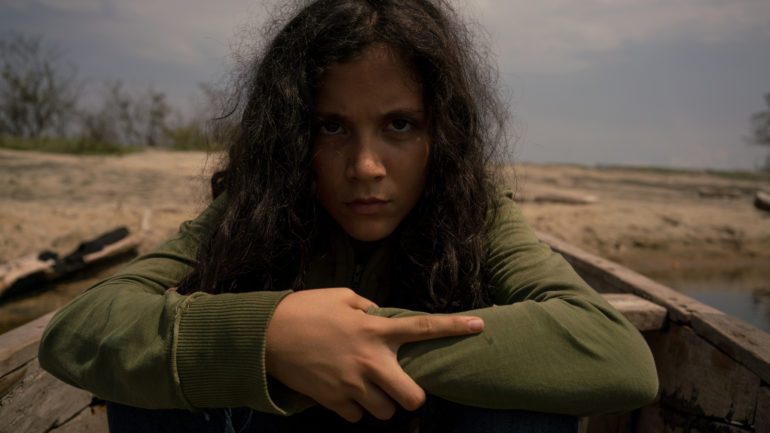Film Review: ‘Wandering Girl’
By Jessica Kiang
LOS ANGELES (Variety.com) – In a tangle of lithe limbs and uncombed hair, bonding moments and buried resentments, four half-sisters embark on a road trip across Colombia to bring the youngest of their number to live with an aunt, following the death of their father in “Wandering Girl.” Writer-director Rubén Mendoza’s fourth feature, the deserving Grand Prix winner at the Tallinn Black Nights Film Festival, is a tenderly observed coming-of-age story, laced with careful insights about femininity and girlhood that are perhaps even more potent in being informed by Mendoza’s thoughtful outsider’s perspective.
Ángela (charismatic newcomer Sofía Paz Jara) is 12 years old when the only parent she has ever known, her father, is killed in a motorcycle accident. Among the mourners who come to Cali for the funeral are her three half-sisters, who know each other loosely but have never met Ángela. They are all in their late twenties, all three the children of different mothers, and all harbor differently shaped impressions of their footloose father. Rather than let her be subsumed into the foster system, the trio closes ranks around Ángela, and the women decide to drive the girl the 1,500 cross-country miles to deposit her with her aunt.
One of the subtler accomplishments of this beguiling story is the way the three older sisters, Carolina (Carolina Ramírez), Paula (Lina Marcela Sánchez), and Gabriela (María Camila Mejía) come gradually into focus as individuals, mirroring the way the dreamy yet truculent Ángela comes to know them. Initially they operate more as a choral idea of sisterhood, an impression enhanced throughout by Las Ánez’ lovely, humming, abstract vocal score, and by Sofía Oggioni’s clever, child’s-eye-level camerawork, which, in the beginning, often mimics Ángela’s disorientation and dissociation by filming the older women from the neck down, their voices disembodied.
But soon, with the foursome crushed into a small car and then sharing a dingy motel room en route when the car is vandalized, in naturalistic, unforced exchanges we learn about Caro’s jealous partner Pau’s prickly past relationships and Gabriela’s life of privilege as the daughter of a diplomat. Ángela, sitting in the back with her wild hair whipping through the open window, often drifts into reverie, daydreaming about tunnels and swimming and, in one surreal sequence, imagining herself dancing a peculiar pas-de-deux with a JCB. But, echoed in the increasing freedom and airiness of the photography, her inward nature gives way to curiosity about these three models of worldliness and especially about the womanly bodies they occupy so casually, yet with such practiced awareness of their power and vulnerability.
Ángela’s preoccupation with her sisters’ physicality is the film’s most delicate and potentially troublesome aspect, but Mendoza negotiates it brilliantly, and Oggioni’s gaze, though inquisitive, is never lecherous. On the brink of adolescence, and never having had a female role model, Ángela is suddenly made intimately aware of the changes she too will undergo and the pleasures and dangers they represent. Caro’s body conceals a secret revealed later on. Pau’s is inked with a tattoo for each man she has “chosen,” as she defiantly insists, explaining, “You don’t let them choose you.” And the quotable rebuke, delivered to a leering mechanic, of, “Why are you looking at my tits? Do I have subtitles?” (made funnier for non-Spanish speakers because, in fact, she does) has a terrifying corollary when a night out turns ugly with the threat of sexual violence.
These concerns of the flesh, though fully articulated and unambiguously explored, are only one aspect of Mendoza’s evident admiration for sisterhood as a more generalized sociological concept than its literal example here. “Wandering Girl” for all its flawless, fully embodied performances and insights into family and nature vs. nurture, has resonances beyond the story of four sisters united and divided by shared paternity. Their interactions are irreverent, often abrasive, but there is something primal and beautiful in the way all three women respond as women to the girl Ángela’s moment of maximum uncertainty and loneliness: by closing around her, lifting her up and doing their best to convey her safely from the edge of childhood to the farther shore. Growing up is, unavoidably, a series of endings, but, depending on how we are helped through them, they can feel like violent abandonments or gentle farewells.

